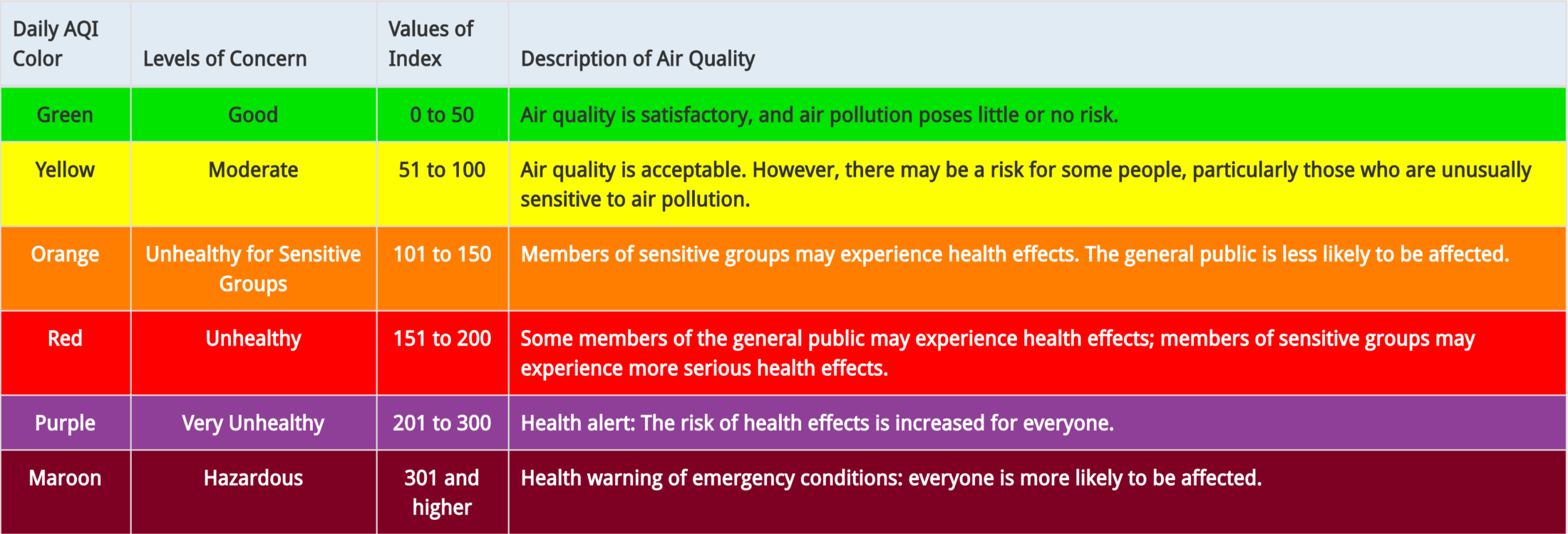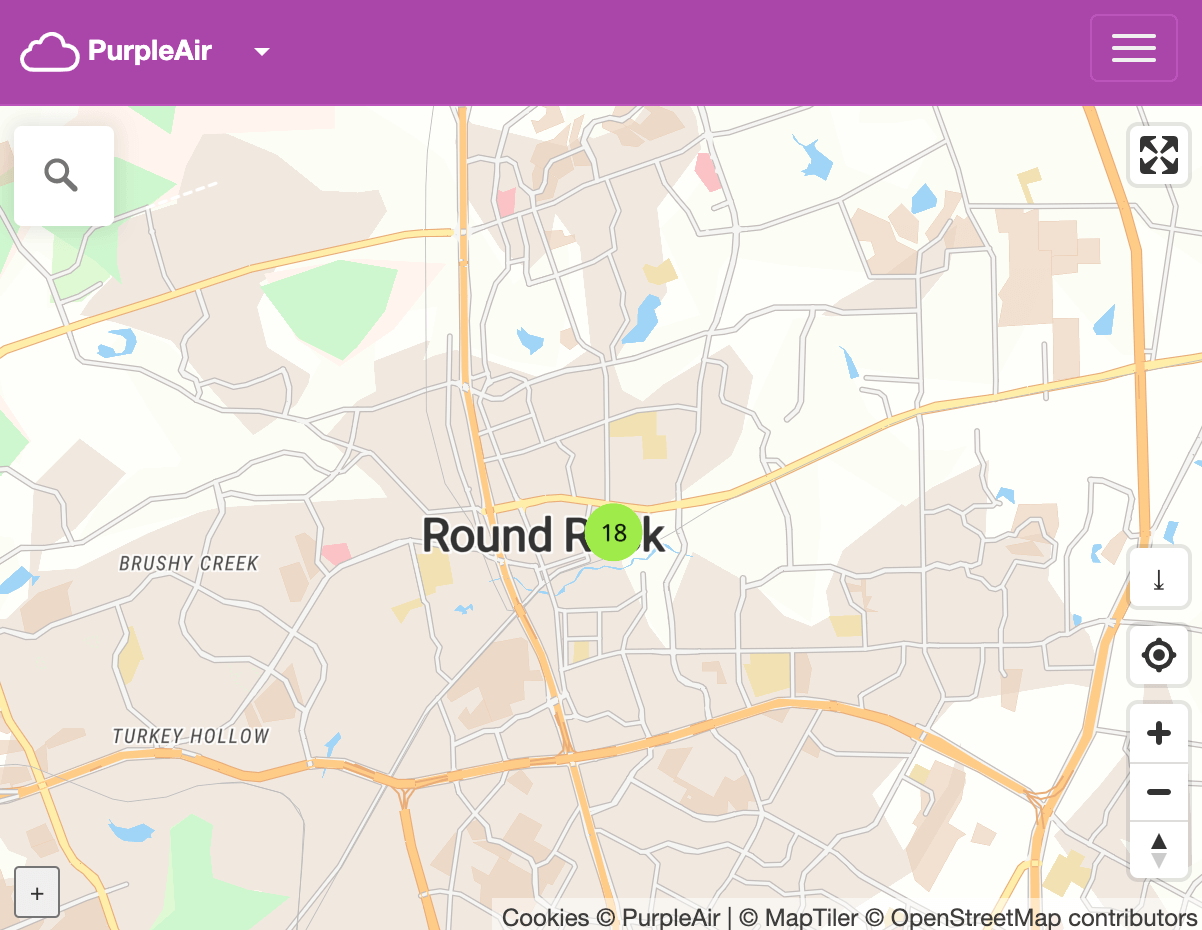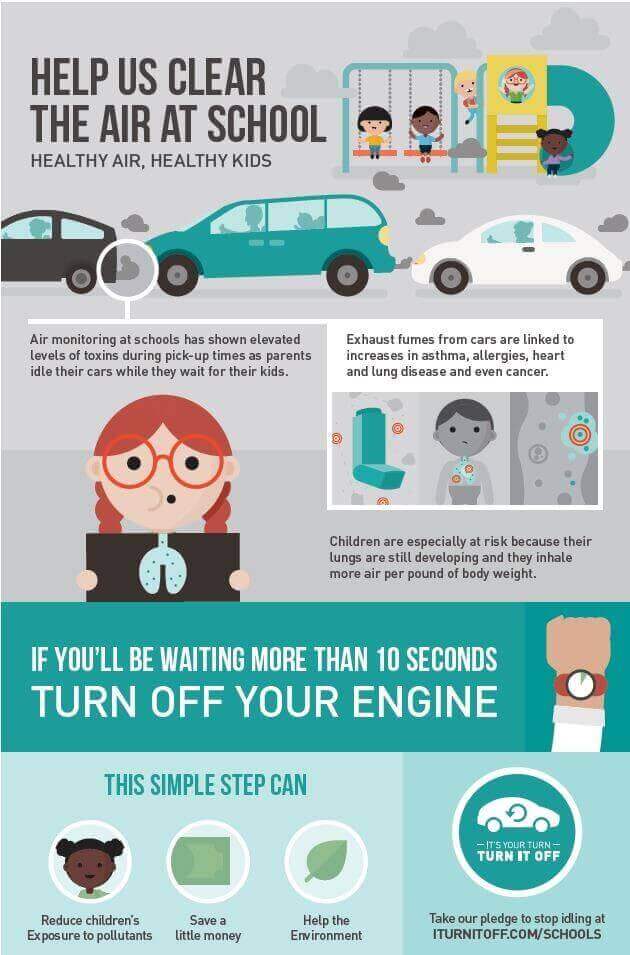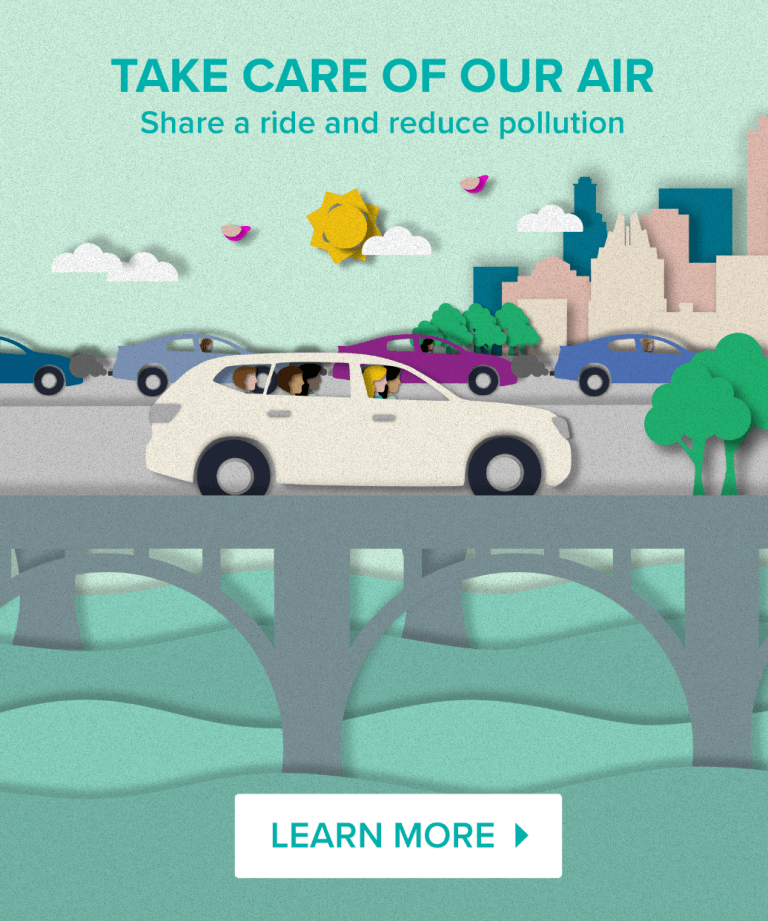The City of Round Rock is committed to participating in air quality initiatives. Ground-level ozone is the area’s number one air quality issue. Ozone forms in the sun, is worse in the afternoon and early evening and is usually more prominent on hot summer days. Ground-level ozone can affect anyone, but children and persons with a compromised respiratory system are especially vulnerable.
Air emissions from motor vehicles are a major contributor to unhealthy ground-level ozone and smog formation in Central Texas.
You don't have to "See it, to Breathe it"
"Idling is Exhausting"
Exhaust fumes are toxic and even though you don’t see it, you still breathe it! Idle cars can produce harmful gases and waste fuel. This pollution is especially harmful to children, who breathe more air each minute than adults due to the size and growth rate of their lungs. So roll down the windows and turn your car off to save money on gas and improve the quality of air your children are breathing. The best school experience is one with clean air.
Turn it Off
- This school season, turn your car off while waiting in line to pick up your kids.
- Sometimes early morning coffee is necessary, but waiting in the long line at the drive through isn’t. Park your car and head inside.
- Did you know that restarting your vehicle is better for air quality than idling your vehicle for 10 seconds or more?
- 3.8 million gallons of fuel is wasted by idling each day in the U.S. Learn more at iturnitoff.com.
- Learn how to #TakeCareofOurAir at AirCentralTexas.org
Maintain Your Vehicle
- Follow your vehicle manufacturer’s maintenance recommendations
- Keep your tires properly inflated (this also helps your gas mileage!)
- If your check engine light is on, get it checked, there is a good chance your car is releasing excess pollutants and/or consuming too much gas.
- If your car has failed its inspection you may qualify for the Drive A Clean Machine Program. You could receive up to $600 for vehicle repairs or up to $3,500 towards the cost of a vehicle replacement.
- Learn more at Drive Clean Across Texas
Ride Sharing
Ride sharing is a great option for commuting — you save money on gas and maintenance and reduce wear and tear on your vehicle. You also help reduce traffic congestion and air pollution!
Don’t know where to start? Check out mycommutesolutions.com a regional carpool matching and trip-planning tool. Commute Solutions can help you find a carpool partner if you do not already have one, you can search for bike routes, discover transit routes and log your commutes.
Air Quality Index

Source: Air Now, https://www.airnow.gov
How you can help
- Drive less. Use public transportation, walk, or ride your bike. Just spend less time in your car.
- Carpool. Pick up your friends when heading to the movies or a night on the town. Sharing the trip saves gas, and makes parking easier.
- Drive a “greener” vehicle. When it’s time to buy a car, look for high gas mileage…or an alternative fuel.
- Don’t idle. Skip the drive-thru and don’t leave the engine running while you run in a store or wait for a passenger.
- Refuel after 6pm. Vapors from gasoline escape when you refill your tank. Fueling in the evening prevents those vapors from “cooking” all day long.
- Tune up your car. Proper maintenance can increase gas mileage and reduce pollution.
- Combine or put off errands. Make lists and plan errands efficiently to avoid extra driving and save time. If you can, delay your driving errands until the ozone is less severe.
- Stay & play in your neighborhood. Instead of driving, shop locally, take walks, and reconnect with your neighborhood.
- Walk or jog. Instead of driving to the gym, try getting your exercise the old-fashioned way.
- Bring your lunch. Don’t drive, pack! Or carpool to lunch with co-workers, or walk to a nearby eatery.
- Save energy. Most energy is produced by burning fossil fuels, so more energy equals more pollution.
- Use less water. It takes energy to pump and treat water, so using less water reduces energy waste and pollution.
- Recycle and reuse. Find new uses for old materials and reduce the demand for high-polluting factory processes by recycling as much as possible.
- Use low-VOC paints. Cut down on fumes with low-VOC paints, and use brushes or rollers instead of spray equipment.
- Turn off your monitor. Computer monitors are energy hogs. Upgrade to a more efficient model, or turn the monitor off while away from your desk.
About Air Central Texas
To learn more about our regional air quality, what you can do to reduce emissions and exposure to air pollution, please visit aircentraltexas.org.





